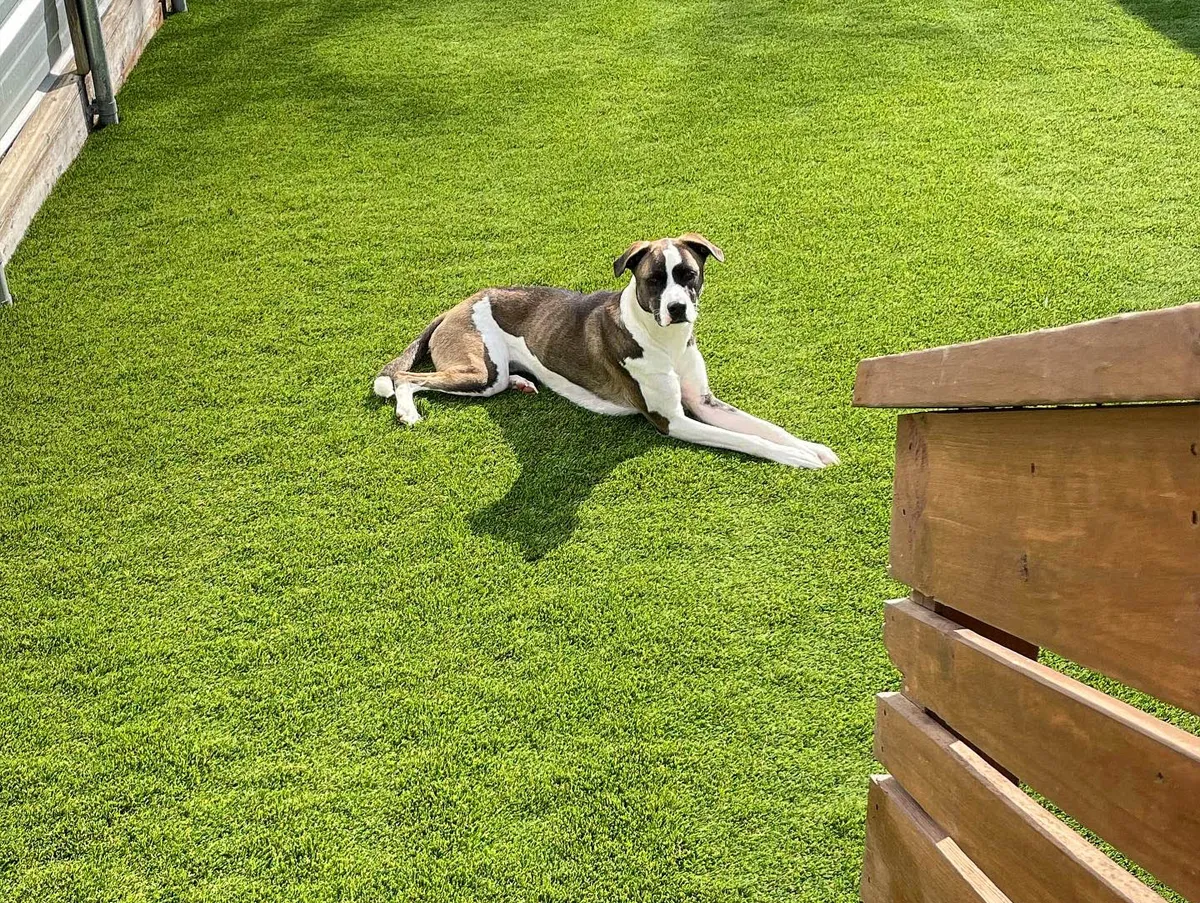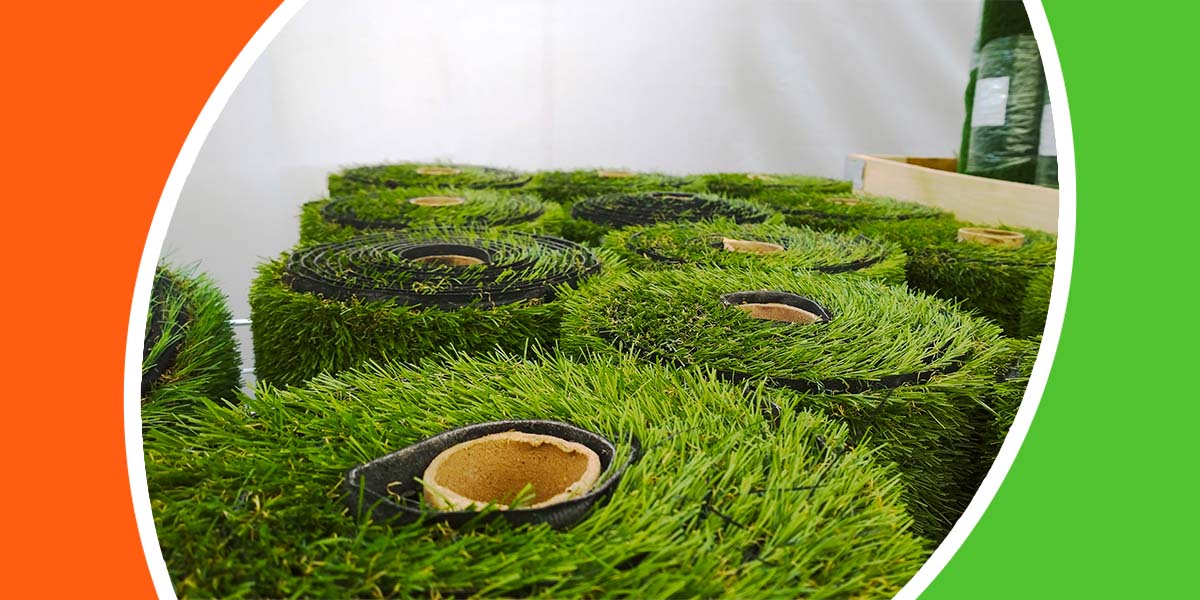Long-Lasting Arizona Artificial Turf for Residential and Commercial Applications
Explore the Environmental Perks of Opting for Artificial Lawn Solutions
The adoption of artificial lawn remedies presents an engaging opportunity to resolve pushing environmental obstacles. By substantially reducing water usage and reducing the application of harmful chemicals, these options not only promote sustainable landscape design yet also secure local environments.
Water Preservation Conveniences
Among the most substantial advantages of synthetic grass is its ability to preserve water. Traditional grass lawns call for significant watering, particularly in locations vulnerable to dry spell or water constraints. In contrast, synthetic grass does not require watering, significantly minimizing the general demand for water resources. This feature is especially valuable in dry areas where water deficiency is a pushing worry.
By getting rid of the requirement for normal watering, fabricated lawn adds to lasting landscape methods and helps alleviate the ecological impact of too much water usage. The conservation of water prolongs to the reduction of runoff, which can lead to soil erosion and river air pollution.
In addition, the installment of synthetic grass permits homeowners and municipalities to designate water resources much more efficiently, concentrating on important usages such as drinking water and farming. The shift in the direction of man-made lawn not just promotes liable water usage yet likewise lines up with wider environmental goals targeted at protecting natural deposits.
As communities significantly focus on sustainability, the water preservation advantages of artificial lawn present a compelling case for its fostering in commercial and household landscaping projects.
Minimized Chemical Use
The shift to synthetic grass significantly reduces the reliance on chemical therapies typically used in all-natural lawn maintenance. Traditional lawn administration typically entails the application of herbicides, chemicals, and plant foods to advertise development and control bugs. These chemicals can present dangers to human health and wellness, neighborhood wild animals, and the atmosphere, adding to dirt and water contamination.
On the other hand, man-made turf removes the need for these damaging substances. Once installed, it requires very little maintenance, mostly being composed of normal cleansing and infrequent infill replenishment. This decrease in chemical usage not only profits the instant atmosphere but also adds to broader eco-friendly stability. By decreasing the launch of synthetic compounds into the environment, synthetic grass promotes healthier soil and water systems.
Moreover, the lack of chemical runoff related to synthetic grass setups helps safeguard neighborhood waterways from contamination, sustaining water life and preserving biodiversity. Arizona turf. As areas significantly prioritize sustainable practices, opting for synthetic turf offers a sensible solution that aligns with environmental preservation objectives. Via this change, homeowner can appreciate rich green spaces without jeopardizing environmental health, leading the way for a more sustainable future
Reduced Carbon Footprint

Moreover, the installment of synthetic grass can cause significant water preservation. Natural lawns require significant quantities of water for watering, which not only includes in the carbon impact related to water removal and therapy however likewise strains neighborhood water resources. On the other hand, synthetic grass requires very little upkeep, needing no watering, therefore considerably lowering water usage and its associated energy costs.
Furthermore, the long life of synthetic grass adds to its reduced carbon effect. With a life-span of up to 15 years or more, the demand for regular replacements is decreased, resulting in much less waste and reduced energy consumption in production and taking care of standard turf alternatives. Overall, synthetic turf presents a lasting option for ecologically conscious landscaping.
Environment Conservation
Environment preservation is an essential consideration in the discussion over landscape design options, particularly when contrasting man-made turf to all-natural yard. Natural turf lawns often require comprehensive upkeep, consisting of the use of fertilizers, pesticides, and herbicides, which can adversely influence neighborhood communities. These chemicals can leach right into the dirt and rivers, damaging native flora and animals and disrupting neighborhood environments.
On the other hand, fabricated turf provides a chance to lower the environmental footprint of landscape design. By choosing for artificial turf, house owners can reduce the disturbance of all-natural environments connected with standard lawn treatment practices. Man-made turf gets rid of the demand for damaging chemicals, thereby protecting close-by wild animals and preserving the integrity of surrounding environments. Additionally, investigate this site the setup of artificial grass can cause the conversion of former turf locations right into even more biodiverse landscapes, such as pollinator yards or indigenous plant areas, which can sustain neighborhood wildlife.
Eventually, the transition to fabricated turf not just conserves water and decreases upkeep efforts yet additionally promotes an extra unified connection between human tasks and the native environment, promoting environment conservation at the same time.
Long-Term Sustainability
Long-lasting sustainability is a vital aspect in examining the benefits of man-made lawn over typical grass yards. One of one of the most significant advantages of synthetic grass is its durability; it can last approximately 15-20 years with marginal upkeep, whereas all-natural lawn calls for constant reseeding and replacement. This longevity reduces the need for constant resources, such as water, plant foods, and pesticides, which are necessary for preserving Recommended Reading a healthy and balanced grass yard.
In addition, synthetic grass adds to a reduction in carbon emissions connected with lawn treatment tools. Typical yards usually need gas-powered mowers, trimmers, and blowers, all of which add to air contamination. Artificial turf companies phoenix. In contrast, synthetic grass gets rid of the demand for such equipment, advertising a cleaner setting
Additionally, the production of fabricated turf significantly uses recycled products, enhancing its sustainability profile. As suppliers adopt environmentally friendly practices, the ecological impact of artificial lawn remains to diminish.

Conclusion
The adoption of synthetic grass services presents considerable environmental he said benefits, consisting of significant water preservation, decreased reliance on damaging chemicals, and a lower carbon footprint. Man-made turf aids in preserving all-natural habitats by lessening land disruption and promoting lasting sustainability with the use of long lasting materials. Jointly, these elements highlight the potential of synthetic grass to contribute positively to ecological health and wellness and offer a feasible option to standard landscape design practices in an increasingly resource-conscious world.
In comparison, man-made grass does not need watering, considerably reducing the total demand for water sources. By lessening the launch of synthetic substances right into the ecosystem, man-made grass promotes much healthier dirt and water systems.
Additionally, the installment of fabricated grass can result in significant water preservation. In comparison, synthetic grass needs very little maintenance, needing no watering, thereby dramatically decreasing water usage and its linked power costs.
